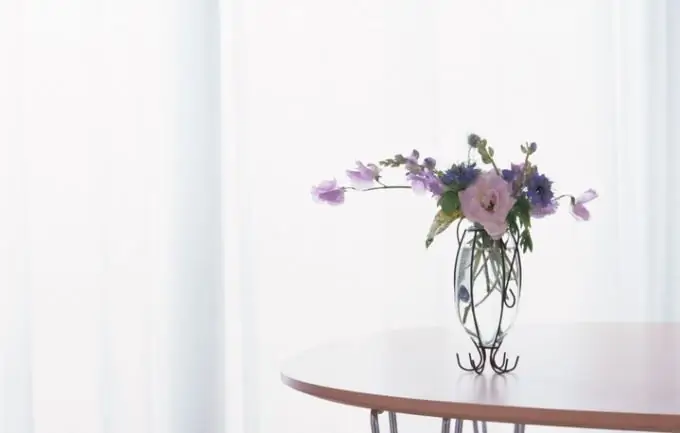Surely in any apartment there is an old glass vase. Maybe once she was beautiful, only now she is old-fashioned and uninteresting. I don't want to use it, but it's a pity to throw it away. Such a thing can be given a new look, breathe a second life, simply by painting it. An old vase will sparkle with the shades of colors that you choose, and will also become an excellent stylish decoration for your interior.

It is necessary
To paint a vase, you will need glass paints or acrylic paints, contour paints, varnish, brushes, colored glue. In addition, seashells, sparkles, rhinestones and similar small ornaments will come in handy
Instructions
Step 1
First, you need to come up with a drawing or pattern that you want to capture on the vase. If you are unsure of your artistic ability, you can try drawing a drawing on paper, and then attach it to a vase and see how it looks. Or, for testing, draw your drawing on a regular jar. If the sketch suits you, you can safely transfer it to the vase and get to work.
Step 2
You can color in several ways. Here are some of them: the contours of the proposed patterns are drawn on a vase with colored glue. You should not be very careful when working with colored glue. If you apply uneven pressure on the tube, it will leave streaks that will give your drawing more originality. Then you need to wait a little until the contour dries up and after that paint the gaps with paint. Light paint should be applied first, followed by a darker one.
Step 3
You can paint a vase with glass paint alone. You need to know that these paints dry very quickly, so try not to stretch the time between strokes so that the paints mix faster, creating beautiful gradual transitions between shades. Remember that you need a separate brush for each type of paint. In order for the brush to serve you for a long time, after painting, rinse it in hot water, and wash the remaining paint and moisture with a cloth.
Step 4
It is also possible to use acrylic paints. This paint is evenly applied to the glass surface. This is convenient because if the color turns out to be unsaturated, then you can paint it again, and so find the shade you need. After painting, for greater stability, it is necessary to varnish the surface of the vase.






